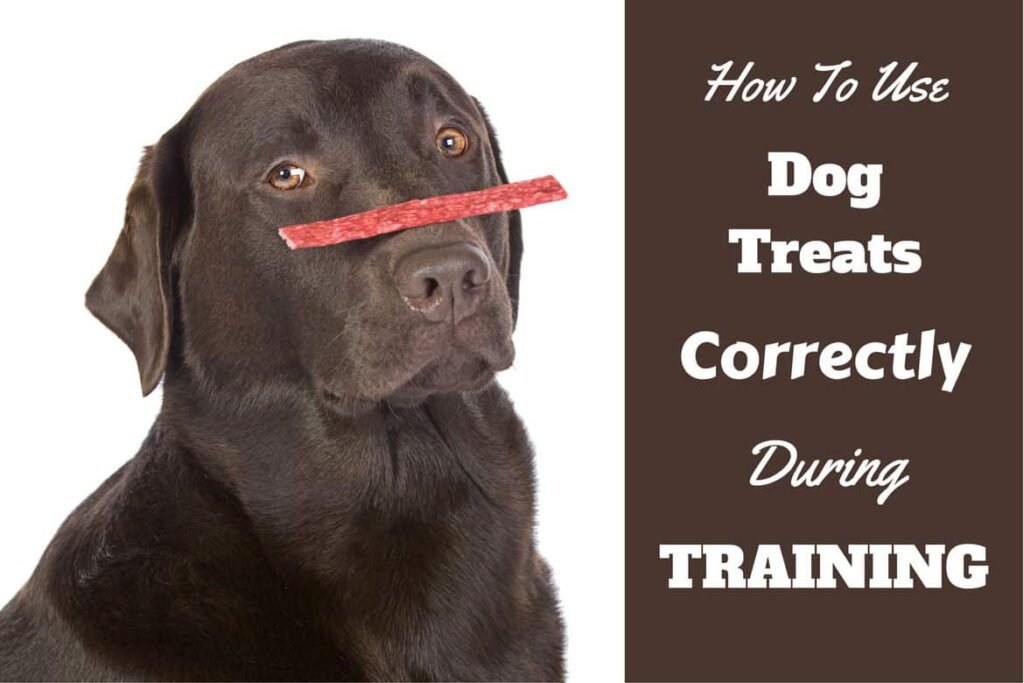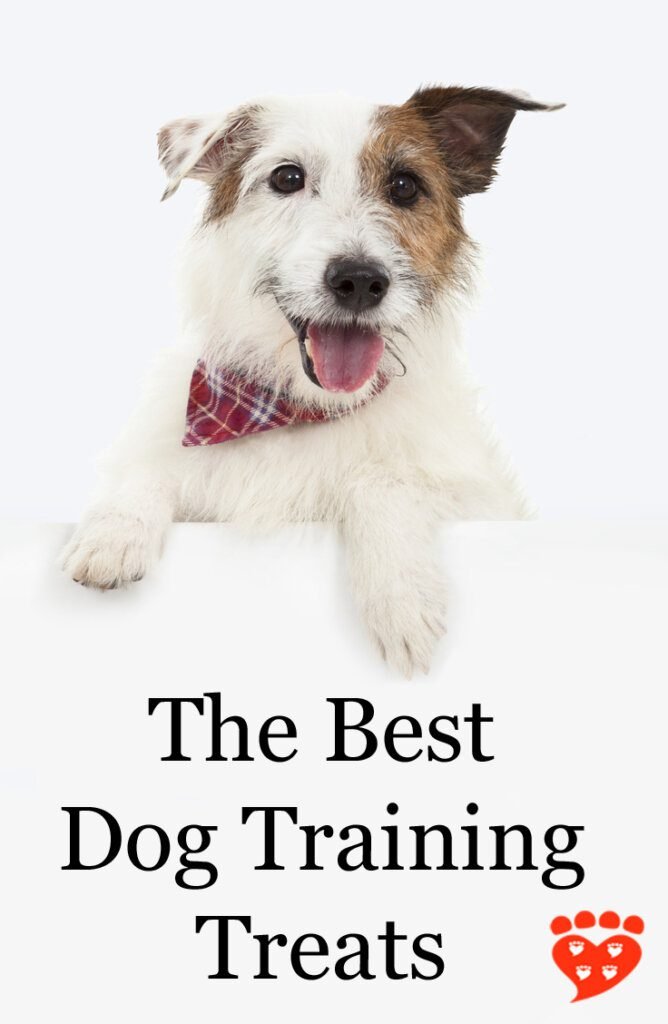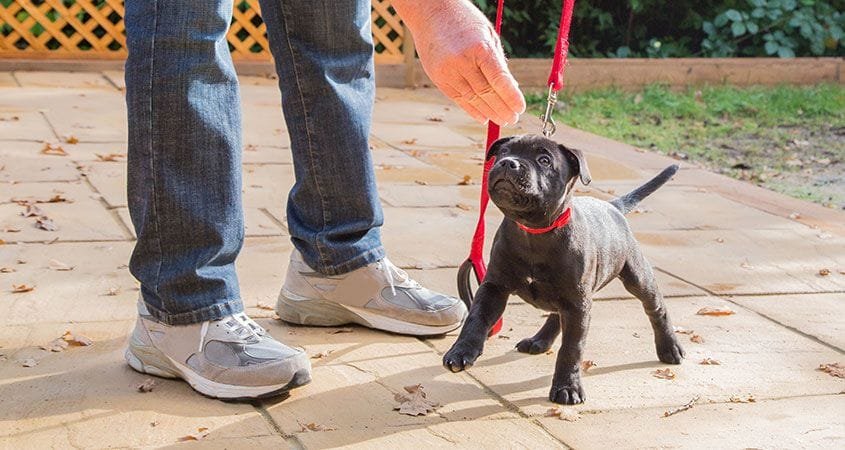Table of Contents
Are you struggling to train your dog? Look no further! In this article, we will explore the effectiveness of using tasty treats as a training tool for your furry friend. Discover how using treats can not only incentivize your dog but also strengthen the bond between you two. Learn some key tips and techniques to maximize the success of your training sessions and turn your dog into a well-behaved companion. Get ready to unleash the potential of tasty treats in training your dog!

Choosing the Right Treats
When it comes to choosing treats for your dog’s training, there are a few important factors to consider. First and foremost, you should take into account your dog’s preferences. Just like humans, dogs have their own individual tastes and preferences. Some dogs may prefer meat-based treats, while others may have a preference for treats with a certain texture or flavor. By selecting treats that your dog enjoys, you can make the training process more enjoyable and motivating for them.
In addition to considering your dog’s preferences, it’s also important to use small, bite-sized treats during training. This allows for quick consumption and minimizes any distractions or delays during your training sessions. Bite-sized treats are also easier to handle and can be given more frequently as rewards. This can help keep your dog motivated and engaged throughout the training process.
While it’s important to choose treats that your dog enjoys, you should also ensure that the treats are healthy for them. Look for treats that are made with high-quality ingredients and are free from artificial additives or preservatives. These types of treats are not only healthier for your dog, but they also provide a better nutritional value. By choosing wholesome treats, you can ensure that your dog is getting the necessary nutrients while also enjoying their training rewards.
Another important consideration when choosing treats for your dog’s training is to avoid treats with ingredients that may trigger allergies. Some dogs may have specific food allergies or sensitivities, so it’s important to carefully read the ingredient list before making a purchase. Common allergens for dogs include wheat, corn, soy, and certain types of proteins. By avoiding treats that contain these potential allergens, you can help prevent any negative reactions during the training process.
Lastly, it’s important to select treats that are easy to handle during training. Treats that are too large or messy can be difficult to work with, causing unnecessary frustration for both you and your dog. Opt for treats that are small and easy to hold, so that you can quickly and easily reward your dog for their desired behaviors. This will help streamline the training process and make it more efficient for both you and your furry friend.
Benefits of Using Treats in Dog Training
Using treats as a training tool can offer a wide range of benefits for both you and your dog. First and foremost, treats can act as a powerful motivator and reward for your dog. Dogs are instinctively food-motivated animals, so using treats as a reward can help reinforce their desired behaviors. By providing treats as a reward, you can encourage your dog to continue performing those behaviors and make the training process more enjoyable for them.
In addition to motivating your dog, treats can also facilitate effective communication during training. Dogs are skilled at picking up on cues and signals, and by pairing those cues with treats, you can create a clear and consistent means of communication. This can help your dog understand what is expected of them and make it easier for them to learn and comply with your commands.
Using treats in training also helps to create positive associations with the training process. When your dog receives tasty treats as a reward, they will begin to associate training sessions with enjoyable experiences. This positive association can make your dog more eager to participate in future training sessions and can lead to faster and more effective learning.
Additionally, using treats in training strengthens the bond between you and your dog. It creates a positive and rewarding interaction between the two of you, fostering trust and strengthening your relationship. Your dog will come to see you as a source of rewards and praise, making them more willing to listen and obey your commands.
Furthermore, treats can provide mental stimulation for your dog during training. The act of working for and receiving treats engages your dog’s brain, keeping them mentally sharp and focused. This mental stimulation can be just as important as physical exercise for your dog’s overall well-being.
Overall, the use of treats in dog training can offer a multitude of benefits. From motivation and communication to positive associations and mental stimulation, treats can help enhance the effectiveness and enjoyment of your training sessions.
Basic Training Commands with Treats
When it comes to training your dog, there are several basic commands that are essential to teach. These commands lay the foundation for more advanced training and help establish a well-behaved and obedient dog. By using treats as rewards during the training process, you can effectively teach these commands to your furry friend.
Sit
Teaching your dog to sit is often one of the first commands that owners tackle during training. To begin, hold a treat close to your dog’s nose and slowly raise it upwards. As your dog follows the treat with their eyes and nose, their bottom should naturally lower into a sitting position. Once your dog is sitting, say the command “Sit” and immediately reward them with the treat. Repeat this process, gradually phasing out the treat as your dog becomes more proficient in responding to the command.
Stay
The command “Stay” is crucial for keeping your dog safe and well-behaved in various situations. To teach this command, start by asking your dog to sit. Once they are in a sitting position, hold your hand out in front of you, palm facing towards your dog, and say the command “Stay” in a firm yet gentle tone. Take a step back, and if your dog remains in a sitting position, reward them with a treat and praise. Gradually increase the distance and duration of the stay as your dog progresses in their training.
Lie Down
Teaching your dog to lie down on command can be beneficial for their safety and overall obedience. Begin by instructing your dog to sit. With a treat in your hand, lower it down towards the ground, close to your dog’s front paws. As your dog follows the treat with their eyes and nose, their body should naturally lower into a lying down position. Once they are lying down, say the command “Down” and reward them with the treat. Practice this command regularly to reinforce their understanding and response.
Come
The command “Come” is essential for ensuring your dog’s recall and responsiveness. To begin, have your dog on a leash in a safe and secure area. Crouch down, open your arms, and use an excited and encouraging tone to say the command “Come.” Gently tug on the leash to guide your dog towards you, rewarding them with a treat and praise as soon as they reach you. Consistently practice this command in various environments and gradually increase the distance between you and your dog to reinforce their recall skills.
Leave it
Teaching your dog the command “Leave it” can help prevent them from picking up or engaging with potentially harmful objects or substances. Begin by placing a treat in your closed hand. Present your closed hand to your dog, allowing them to sniff and investigate. Say the command “Leave it” in a firm and assertive tone. Once your dog stops trying to access the treat, reward them with a different treat from your other hand. Repeat this process, gradually introducing more tempting items to leave, such as toys or food on the ground.
Drop it
The command “Drop it” is important for preventing your dog from holding onto or chewing inappropriate objects. Begin by offering your dog a safe and appropriate toy or object to hold in their mouth. Once they have a firm grip on it, say the command “Drop it” in a gentle yet firm tone. Hold a treat close to your dog’s nose to capture their attention and encourage them to release the object. Once they drop it, reward them with the treat and praise. Regular practice of this command will help reinforce their understanding and compliance.
By incorporating treats into the training process, you can effectively teach these basic commands to your dog. Remember to be patient and consistent in your training sessions, and always reward your dog with treats and praise for their successful responses.
Establishing a Reward System
In order to effectively use treats as rewards in your dog’s training, it’s important to establish a consistent and reliable reward system. This ensures that your dog understands when they have performed a desired behavior and what they will receive as a result. By following a few key principles, you can create a reward system that is effective and conducive to your dog’s learning.
Choose a consistent cue for the reward
When it comes to delivering the reward, it’s essential to use a consistent cue that signals to your dog that they have successfully completed the desired behavior. This can be a verbal cue such as “Yes!” or “Good dog!” or a clicker sound if you are utilizing clicker training. By consistently using the same cue, your dog will quickly associate it with a positive outcome and understand that they have done something right.
Use a marker word or clicker to indicate success
In addition to the consistent cue for the reward, it can be helpful to use a marker word or clicker to more precisely indicate to your dog when they have successfully performed the desired behavior. A marker word such as “Yes!” or a specific sound from a clicker serves as a clear signal that informs your dog that they will receive a reward. This allows for more precise timing and helps your dog understand exactly which behavior they are being rewarded for.
Ensure immediate delivery of the treat
For your dog to properly associate the treat with the desired behavior, it’s important to deliver the treat immediately after they have performed the behavior. Delaying the reward can cause confusion and make it harder for your dog to understand which behavior they are being rewarded for. By providing the reward immediately, your dog will be able to form a clear connection between the behavior and the reward.
Vary the value of treats
To keep your dog motivated and engaged during training, it can be helpful to vary the value of treats. By using a combination of high-value and low-value treats, you can keep your dog guessing and maintain their interest. High-value treats, such as small pieces of cooked chicken or cheese, can be used for more challenging or demanding behaviors. Lower-value treats, such as commercial dog training treats, can be used for simpler or less demanding behaviors. This variation in treat value helps to keep your dog motivated and eager to work for their rewards.
Gradually reduce treat frequency
While treats are an important tool in dog training, it’s also essential to gradually reduce their frequency over time. As your dog becomes more proficient in their training and consistently performs the desired behaviors, you can begin to phase out the use of treats and rely more on verbal praise and petting as rewards. By gradually reducing treat frequency, you can ensure that your dog’s behavior is not solely reliant on food rewards and that they are capable of responding to your commands without the presence of treats.
By establishing a consistent reward system that incorporates these principles, you can effectively use treats to reinforce your dog’s desired behaviors and make the training process more effective and enjoyable for both of you.

Using Treats as Lures and Rewards
When it comes to training your dog, treats can be used in two key ways: as lures to guide your dog into a desired position and as rewards for successful behaviors. Both methods are effective in shaping your dog’s behavior and can be used in combination to maximize their learning and understanding.
Luring your dog into a desired position
Using treats as lures is a helpful technique for guiding your dog into a desired position, such as sitting or lying down. By holding a treat in your hand and using it to guide their movement, you can effectively communicate to your dog what is expected of them. For example, to lure your dog into a sitting position, hold a treat close to their nose and gradually move it upwards. As your dog follows the treat with their eyes and nose, their bottom should naturally lower into a sitting position. Once they are in the desired position, give them the treat as a reward. With consistent practice, your dog will begin to associate the luring technique with the corresponding position and will be able to perform it without the need for a treat.
Rewarding your dog after a successful behavior
In addition to using treats as lures, it’s important to reward your dog with treats after they have successfully performed a desired behavior. This reinforces their understanding and encourages them to continue performing that behavior in the future. For example, if you ask your dog to sit and they promptly obey your command, immediately reward them with a treat and praise. This positive reinforcement helps to solidify their understanding of the command and motivates them to continue responding appropriately in future training sessions.
Using treats to shape behavior
Treats can also be used to shape your dog’s behavior by rewarding small steps or improvements towards the desired behavior. For example, if you are teaching your dog to stay, you can start by rewarding them for only a few seconds of staying in one place. Gradually increase the duration of the stay before rewarding, reinforcing their ability to remain in the desired position. By shaping behavior in this way, you break down complex behaviors into manageable steps and make the training process more achievable for your dog.
Fading treats into intermittent rewards
As your dog becomes more proficient in their training, it’s important to gradually fade the use of treats and transition to intermittent rewards. This means that you will reward your dog with treats less frequently, but still provide occasional rewards to reinforce their desired behaviors. This helps prevent your dog from becoming overly reliant on treats and ensures that they are able to perform the behaviors without the presence of a treat. By gradually fading treats into intermittent rewards, you can maintain your dog’s motivation and reinforce their learning without the need for constant food rewards.
Using treats as lures and rewards allows you to effectively shape your dog’s behavior and reinforce their understanding of desired commands and behaviors. By combining these techniques, you can make the training process more engaging, enjoyable, and successful for both you and your furry friend.
Avoiding Common Mistakes
While using treats as rewards in dog training can be highly effective, it’s important to be mindful of common mistakes that can hinder the training process. By avoiding these mistakes, you can ensure that your dog’s training experience remains positive and successful.
Over-reliance on treats
One common mistake is relying too heavily on treats as rewards. While treats are a valuable tool in training, it’s important to gradually reduce their frequency over time. This allows your dog to become more independent in their responses and not solely reliant on the presence of treats. By gradually transitioning to other forms of rewards, such as verbal praise and petting, you can reinforce your dog’s behavior without the need for constant treats.
Using treats as bribes
Another mistake to avoid is using treats as bribes to elicit desired behaviors from your dog. Instead of offering a treat before your dog has performed the behavior, use treats as rewards after they have successfully completed the desired action. This helps your dog understand that the treat is a result of their actions and encourages them to repeat those behaviors in the future.
Failing to adjust treat value
It’s important to consider the value of the treats you are using in relation to the difficulty of the behavior or command you are asking your dog to perform. For more demanding or challenging tasks, such as learning a new command or mastering a complex behavior, use higher-value treats as rewards. This ensures that your dog is motivated and excited to work for the reward. For simpler or less demanding tasks, lower-value treats can be used to maintain motivation without over-rewarding.
Skipping reward timing
Timing is crucial when using treats as rewards. It’s important to deliver the treat immediately after your dog has successfully performed the desired behavior. Delaying the reward can cause confusion and make it harder for your dog to understand which behavior they are being rewarded for. By providing the reward promptly, your dog can form a clear connection between the behavior and the reward, facilitating their learning and understanding.
Inconsistency in treat delivery
Consistency in treat delivery is essential for effective training. If you consistently reward your dog for a desired behavior, they will quickly learn to associate that behavior with a positive outcome. However, if you are inconsistent in your treat delivery, your dog may become confused and unsure of what is expected of them. By consistently rewarding desired behaviors with treats, you reinforce your dog’s understanding and encourage them to continue performing those behaviors in the future.
By being mindful of these common mistakes and taking proactive steps to avoid them, you can ensure that your dog’s training with treats remains effective, engaging, and successful.

Addressing Challenges with Treat Training
While using treats in dog training can be highly effective, there may be certain challenges that arise along the way. By addressing these challenges head-on, you can overcome any obstacles and ensure that your dog’s training with treats remains a positive and successful experience.
Handling distractions during training
One common challenge is dealing with distractions during training sessions. Dogs are naturally curious creatures and may become easily distracted by their surroundings, other animals, or noises. To address this challenge, it’s important to gradually increase the level of distractions during training. Start in a quiet and controlled environment, and gradually introduce distractions one at a time. This allows your dog to build up their focus and concentration while still receiving treats as rewards. By slowly exposing your dog to distractions, you can strengthen their ability to focus on their training regardless of the surrounding distractions.
Dealing with treat-motivated behavior
Some dogs may become overly excited or hyperactive when treats are involved in their training. This can make it challenging to maintain their focus and concentration during training sessions. To address this issue, it’s helpful to establish clear and consistent rules regarding treat-motivated behavior. Require your dog to remain calm and composed before they receive a treat. If they become too excited or impatient, simply withhold the treat until they are in a calm state. This helps to reinforce the desired behavior of calmness and discourages hyperactive or impatient behavior during training.
Troubleshooting picky eaters
If your dog is a picky eater, they may not be motivated by traditional store-bought treats. In this case, it’s important to experiment with different types of treats to find what your dog finds most enticing. Homemade treats or even small pieces of cooked chicken or cheese can be highly motivating for picky eaters. Additionally, vary the textures and flavors of the treats you offer to keep your dog engaged and interested. By finding the treats that appeal most to your picky eater, you can ensure that they remain motivated and excited during training sessions.
Resolving overexcitement for treats
On the flip side, some dogs may become excessively excited or anxious when treats are involved in their training. This can make it difficult for them to focus and concentrate on the desired behaviors. To address this issue, it’s important to establish a calm and controlled training environment. Begin by practicing relaxation exercises before training sessions to help your dog become calm and centered. Gradually reintroduce treats into the training sessions, ensuring that your dog remains calm and composed throughout. By maintaining a calm and controlled atmosphere, you can help your dog learn to focus and concentrate on their training, rather than becoming overwhelmed by their excitement for treats.
By addressing these common challenges in treat training, you can maintain a positive and successful training experience for both you and your dog.
Alternative Treats for Dogs
While traditional store-bought treats can be highly effective in dog training, there are also alternative options to consider. These alternatives can add variety to your dog’s training rewards and may appeal to different dogs with varying tastes and preferences.
Use natural, homemade treats
One alternative to traditional store-bought treats is to make your own homemade treats using natural ingredients. By making treats at home, you have full control over the ingredients and can ensure that they are healthy and free from artificial additives or preservatives. There are countless recipes available online for homemade dog treats, ranging from simple to more complex. Making your own treats can be a fun and rewarding activity for you and your dog, while also providing them with a tasty and healthy reward.
Utilize fruits and vegetables as rewards
Many fruits and vegetables are safe and healthy options for dogs and can be used as rewards during training. Some dogs may have a preference for these natural treats over traditional store-bought options. Fruits such as blueberries, strawberries, and apple slices can be served as small, bite-sized treats. Vegetables such as baby carrots, green beans, and cucumber slices also make for crunchy and low-calorie rewards. However, it’s important to research which fruits and vegetables are safe for dogs and to avoid any that may be toxic or harmful.
Consider using commercial dog treats
While alternative treats can be a great option, it’s important to note that not all commercial dog treats are created equal. Some commercial treats may contain artificial additives, preservatives, or low-quality ingredients. However, there are also many high-quality and natural commercial treats available on the market. Look for treats that are made with wholesome ingredients and are free from artificial additives or preservatives. Read the ingredient list carefully and choose treats that align with your dog’s dietary needs and preferences.
Experiment with different textures and flavors
Just like humans, dogs have their own unique tastes and preferences. Some dogs may prefer soft and chewy treats, while others may prefer crunchy or freeze-dried options. By experimenting with different textures and flavors, you can find the treats that your dog finds most enticing and motivating. Offer a variety of treats during training sessions to keep your dog engaged and interested. This variety can add excitement to the training process and ensure that your dog remains motivated and eager to work for their rewards.
By considering these alternative treat options, you can add variety and excitement to your dog’s training rewards. Whether using natural, homemade treats, incorporating fruits and vegetables, or selecting high-quality commercial treats, offering different options can help keep your dog engaged and excited during training sessions.

Balancing Treat Rewards with Other Forms of Reinforcement
While treats are often the go-to reward in dog training, it’s important to balance them with other forms of reinforcement. By incorporating a variety of reinforcement methods, you can provide a well-rounded and comprehensive training experience for your dog.
Incorporate praise and petting
Verbal praise and physical affection are powerful forms of reinforcement in dog training. Alongside treats, incorporating praise and petting can provide additional positive reinforcement for your dog’s desired behaviors. Verbal cues such as “Good dog!” or “Well done!” delivered in an enthusiastic and encouraging tone can communicate to your dog that they have performed the desired behavior. Additionally, petting, stroking, and gentle scratches in areas that your dog enjoys can provide physical affection and further reinforce their understanding and motivation.
Use play as a reward
For many dogs, play is just as rewarding as treats. Incorporating playtime as a reward during training sessions can provide a welcome break and a fun-filled experience for your dog. For example, after successfully completing a training command, engage in a brief game of fetch or have a play session with their favorite toy. This helps to reinforce their desired behavior while also providing them with an outlet for their energy and excitement.
Implement clicker training
Clicker training is a popular technique that utilizes the sound of a clicker to signal to your dog that they have successfully performed a desired behavior. The clicker acts as a marker or bridge between the behavior and the reward, allowing for precise timing and clear communication. By consistently pairing the sound of the clicker with treats or other forms of reinforcement, you can create a strong association between the clicker sound and the desired behavior. Clicker training can be a highly effective form of reinforcement and can be used in conjunction with treats to further enhance your dog’s learning and understanding.
Offer toys or interactive games
Another form of reinforcement is providing your dog with toys or interactive games as rewards. Some dogs may find toys or games more motivating than treats, especially if they are particularly toy-oriented or have high energy levels. Incorporating interactive toys, such as puzzle toys or treat-dispensing toys, can engage your dog’s mental and physical abilities while also reinforcing their desired behaviors. Offering toys or interactive games as rewards allows for different types of stimulation and provides a break from the treat-focused training.
Utilize verbal cues and commands
Verbal cues and commands can also serve as a form of reinforcement in dog training. By consistently using clear and concise verbal cues alongside treats, you can reinforce your dog’s understanding and response to the desired commands. For example, saying “Sit” or “Stay” in a firm and clear tone while simultaneously offering a treat can help your dog associate the verbal cue with the desired behavior. Over time, your dog will learn to respond to the verbal cues alone, reducing the reliance on treats or other forms of reinforcement.
By incorporating a variety of reinforcement methods, you can provide a balanced and comprehensive training experience for your dog. Mixing treats with praise, play, clicker training, toys, and verbal cues allows for a well-rounded approach that caters to your dog’s individual needs and preferences.
Training Tips for Treat Success
To maximize the effectiveness of using treats in your dog’s training, here are some key tips to keep in mind:
Start training in a quiet, low-distraction environment
When beginning the training process, it’s important to start in a quiet and low-distraction environment. This helps your dog focus and concentrate on the training without being overwhelmed or distracted by their surroundings. As your dog progresses in their training and becomes more proficient, you can gradually increase the level of distractions to help them generalize their learned behaviors to different environments.
Keep training sessions short and frequent
Training sessions should be kept short and frequent to prevent your dog from becoming bored or losing focus. Aim for sessions that last no longer than 10-15 minutes, as dogs have shorter attention spans compared to humans. By having shorter sessions and training multiple times throughout the day, you can achieve consistent and effective training results.
Consistency is key
Consistency is crucial in dog training, regardless of the method used. Be consistent in your training cues, reward timing, and expectations. Dogs thrive on routine and clear expectations, so providing this consistency is essential for successful training.
Adjust treat value based on difficulty
As mentioned earlier, the value of treats should be adjusted based on the difficulty of the behavior or command being taught. More challenging or demanding behaviors should be rewarded with higher-value treats, while simpler or less demanding behaviors can be rewarded with lower-value treats. This ensures that your dog remains motivated and engaged throughout the training process.
Maintain a positive attitude
Maintaining a positive and upbeat attitude during training is essential. Dogs are highly intuitive and can pick up on your emotions and energy. By approaching training sessions with a positive and enthusiastic attitude, you can create a fun and enjoyable experience for both you and your dog. This positive energy helps to reinforce their motivation and encourages them to continue learning and performing desired behaviors.
By keeping these tips in mind, you can ensure that your use of treats in your dog’s training is effective, efficient, and enjoyable for both you and your furry friend.
Training Your Dog with Tasty Treats
Using treats as rewards in dog training can be an incredibly powerful tool. From motivating and rewarding your dog to facilitating effective communication and creating positive associations with training, treats offer a wide range of benefits. By following the outlined tips and techniques, you can effectively use treats in training to teach your dog essential commands, shape their behavior, and strengthen your bond. Remember to be patient, consistent, and positive in your training approach, and most importantly, have fun with your furry companion!




